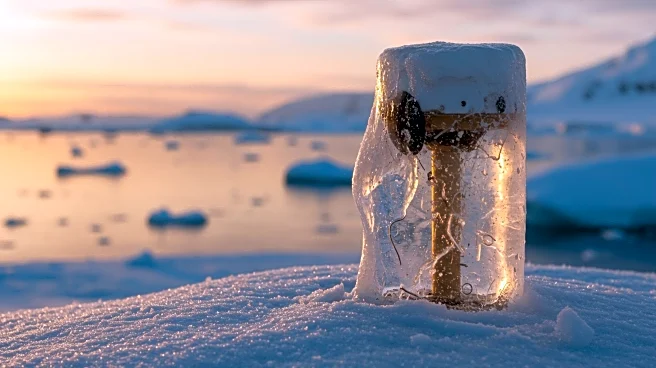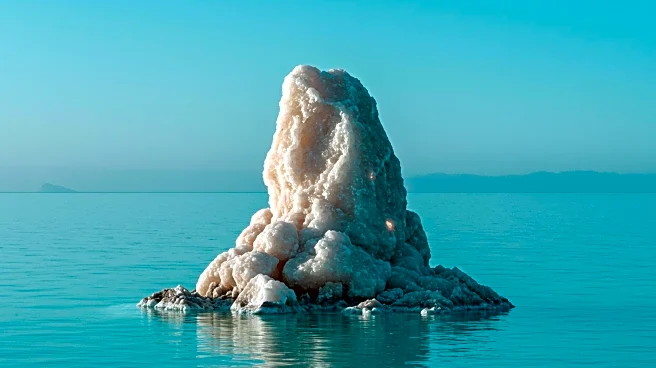Rapid Read • 8 min read
Recent research has analyzed sediment from palaeolakes in the Tibesti region of the Central Sahara, revealing extreme precipitation patterns during the mid-Holocene. The study focused on two lake sediment sequences from the Trou au Natron crater, covering periods from approximately 9.7 to 4.8 cal ky BP. The findings indicate significant changes in lake levels and hydrological balance, with eight distinct lake phases identified. The research highlights a drying trend during the mid-Holocene, marked by increased water salinities and calcite precipitation. The study also simulated precipitation and atmospheric moisture flux, showing that the Mediterranean Sea was a major moisture source for the region, contrary to previous assumptions about the West African monsoon.
AD
Understanding historical climate patterns in the Sahara is crucial for reconstructing past environmental conditions and predicting future climate scenarios. The study's findings provide insights into the hydrological dynamics of the region, which can inform models of climate change and its impact on arid environments. The research underscores the importance of high-resolution climate simulations in capturing localized precipitation patterns influenced by topography. These insights are valuable for scientists studying climate variability and its effects on ecosystems and human societies in desert regions.
The study raises several research questions regarding the hydrological water balances of palaeolakes and the atmospheric circulation patterns that favored precipitation. Future research may focus on refining climate models to better understand the interactions between atmospheric conditions and topography. Scientists may also explore the implications of these findings for current and future water resource management in arid regions. The study's methodology could be applied to other desert areas to assess historical climate variability and its long-term impacts.
The research highlights the complex interplay between atmospheric conditions and geological features in shaping climate patterns. The findings challenge previous assumptions about moisture sources and emphasize the role of orography in precipitation distribution. The study also contributes to broader discussions on climate change adaptation and resilience in arid environments, offering insights into how ancient climate events can inform modern strategies for managing water resources.
AD
More Stories You Might Enjoy











